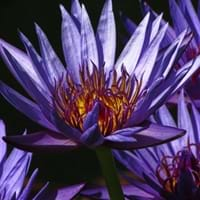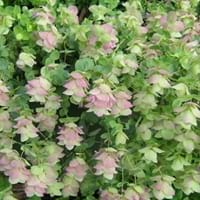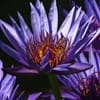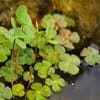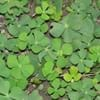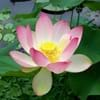Life Span
Perennial
Perennial
Origin
Eastern Africa
Hybrid origin
Types
Not Available
Kent Beauty
Amethyst Falls
Barbara Tingey
Number of Varieties
Not Available
Habitat
Lowland, Ponds
Grassland, Open scrub, Rocky areas
USDA Hardiness Zone
10-11
5-8
AHS Heat Zone
Not Available
10-2
Sunset Zone
Not Available
Not Available
Habit
Oval or Rounded
Clump-Forming
Minimum Height
Not Available
Minimum Width
Not Available
Flower Color
Blue, Dark Blue, Yellow, Yellow green
Pink
Flower Color Modifier
Bicolor
Bicolor
Fruit Color
Light Green
Not Available
Leaf Color in Spring
Dark Green, Green
Dark Green
Leaf Color in Summer
Dark Green
Dark Green
Leaf Color in Fall
Green, Orange, Yellow
Dark Green
Leaf Color in Winter
Green
Light Green
Leaf Shape
Broadly Ovate
Oval
Plant Season
Spring, Summer, Fall, Winter
Summer, Fall
Sunlight
Full Sun, Partial Sun
Full Sun
Type of Soil
Clay, Loam
Loam
The pH of Soil
Acidic, Neutral, Alkaline
Neutral, Alkaline
Soil Drainage
Average
Well drained
Bloom Time
Early Spring
Late Summer, Early Fall
Tolerances
Pollution, Drought, Soil Compaction
Drought
Where to Plant?
In Water, Pot
Container, Ground, Pot
How to Plant?
Corms or bulbs, From Rhizomes, Seedlings
Seedlings
Plant Maintenance
Medium
Medium
Watering Requirements
Plant grows in water
Allow soil to be completely dry in between waterings, Does not require lot of watering, Water twice a day in the initial period, Water when soil is dry
In Summer
Lots of watering
Lots of watering
In Spring
Moderate
Moderate
In Winter
Average Water
Average Water
Soil pH
Acidic, Neutral, Alkaline
Neutral, Alkaline
Soil Type
Clay, Loam
Loam
Soil Drainage Capacity
Average
Well drained
Sun Exposure
Full Sun, Partial Sun
Full Sun
Pruning
Remove damaged leaves, Remove dead branches, Remove dead leaves
Remove damaged leaves, Remove dead branches, Remove dead leaves
Fertilizers
All-Purpose Liquid Fertilizer
All-Purpose Liquid Fertilizer
Pests and Diseases
Lily Beetle, Red blotch, Sap-Sucking Insects
Red blotch
Plant Tolerance
Drought
Drought
Flower Petal Number
Single
Single
Fragrant Leaf
No
Not Available
Foliage Texture
Not Available
Fine
Foliage Sheen
Glossy
Matte
Attracts
Aphids, White bugs
Butterflies
Allergy
Diabetes, Nausea
Not Available
Aesthetic Uses
Beautification, Hanging Basket, Showy Purposes
Showy Purposes
Beauty Benefits
Not Available
Not Available
Environmental Uses
Air purification
Air purification
Medicinal Uses
Anxiety, Combats Stress, Diarrhea, Improve circulation, increase memory, Soothing and relieving pain
Bloating, Bronchitis, Cough, Cramps, Croup, Gastrointestinal disorders, Headache, Rheumatoid arthritis, Urinary tract problems
Part of Plant Used
Leaves, Root, Stem
Leaves
Other Uses
Oil is used in perfume, soaps, creams, etc., Traditional medicine, Used as Ornamental plant, Used for its medicinal properties
Employed in herbal medicine, Used As Food
Used As Indoor Plant
Yes
Yes
Used As Outdoor Plant
Yes
Yes
Garden Design
Bog Garden, Water Gardens
Container, Edging, Groundcover, Mixed Border
Botanical Name
Nymphaea caerulea
ORIGANUM 'Rose Dome'
Common Name
Blue Lotus, Blue Egyptian lotus
Ornamental Oregano
In Hindi
ब्लू लोटस
सजावटी अजवायन
In German
Blue Lotus
Ornamental Oregano
In French
Blue Lotus
ornement origan
In Spanish
Blue Lotus
Ornamentales orégano
In Greek
Blue Lotus
καλλωπιστικά Ρίγανη
In Portuguese
Blue Lotus
ornamental Oregano
In Polish
Blue Lotus
ozdobne Oregano
In Latin
Blue Lotus
decentius Oregano
Phylum
Magnoliophyta
Not Available
Class
Magnoliopsida
Magnoliopsida
Order
Nymphaeales
Not Available
Family
Nymphaeaceae
Lamiaceae
Clade
Angiosperms
Angiosperms, Eudicots
Tribe
Not Available
Mentheae
Subfamily
Not Available
Pitcairnioideae
Number of Species
Not Available
Not Available
Properties of Blue Lotus and Ornamental Oregano
Wondering what are the properties of Blue Lotus and Ornamental Oregano? We provide you with everything About Blue Lotus and Ornamental Oregano. Blue Lotus doesn't have thorns and Ornamental Oregano doesn't have thorns. Also Blue Lotus does not have fragrant flowers. Blue Lotus has allergic reactions like Diabetes and Nausea and Ornamental Oregano has allergic reactions like Diabetes and Nausea. Compare all the properties and characteristics of these two plants. Find out which of these plant can be used as indoor plant. If you are interested to decorate your house and garden, find out aesthetic uses, compare them and select the plant which will beautify your surrounding. Along with beautification, try comparing medicinal and edible uses of Blue Lotus and Ornamental Oregano and you can choose the plant having best and most benefits.
Season and Care of Blue Lotus and Ornamental Oregano
Season and care of Blue Lotus and Ornamental Oregano is important to know. While considering everything about Blue Lotus and Ornamental Oregano Care, growing season is an essential factor. Blue Lotus season is Spring, Summer, Fall and Winter and Ornamental Oregano season is Spring, Summer, Fall and Winter. The type of soil for Blue Lotus is Clay, Loam and for Ornamental Oregano is Loam while the PH of soil for Blue Lotus is Acidic, Neutral, Alkaline and for Ornamental Oregano is Neutral, Alkaline.
Blue Lotus and Ornamental Oregano Physical Information
Blue Lotus and Ornamental Oregano physical information is very important for comparison. Blue Lotus height is 80.00 cm and width 40.00 cm whereas Ornamental Oregano height is Not Available and width Not Available. The color specification of Blue Lotus and Ornamental Oregano are as follows:
Blue Lotus flower color: Blue, Dark Blue, Yellow and Yellow green
Blue Lotus leaf color: Dark Green and Green
Ornamental Oregano flower color: Pink
- Ornamental Oregano leaf color: Dark Green
Care of Blue Lotus and Ornamental Oregano
Care of Blue Lotus and Ornamental Oregano include pruning, fertilizers, watering etc. Blue Lotus pruning is done Remove damaged leaves, Remove dead branches and Remove dead leaves and Ornamental Oregano pruning is done Remove damaged leaves, Remove dead branches and Remove dead leaves. In summer Blue Lotus needs Lots of watering and in winter, it needs Average Water. Whereas, in summer Ornamental Oregano needs Lots of watering and in winter, it needs Average Water.
